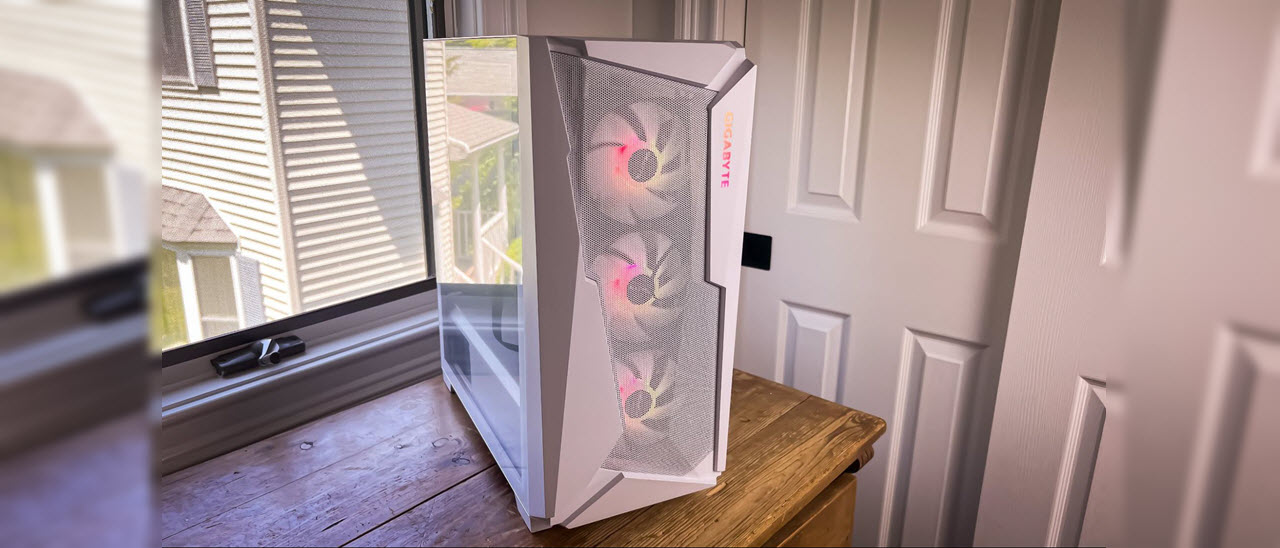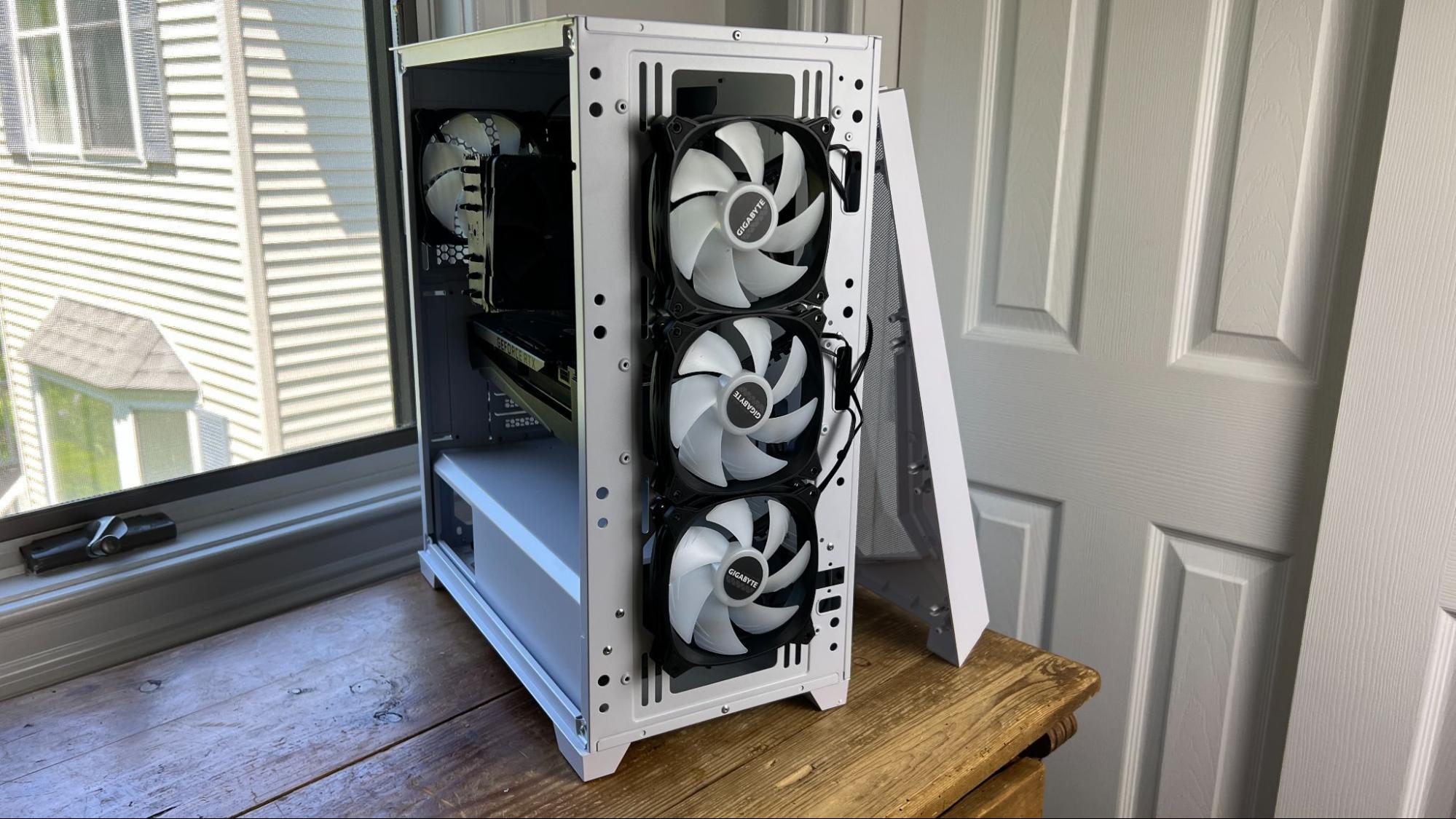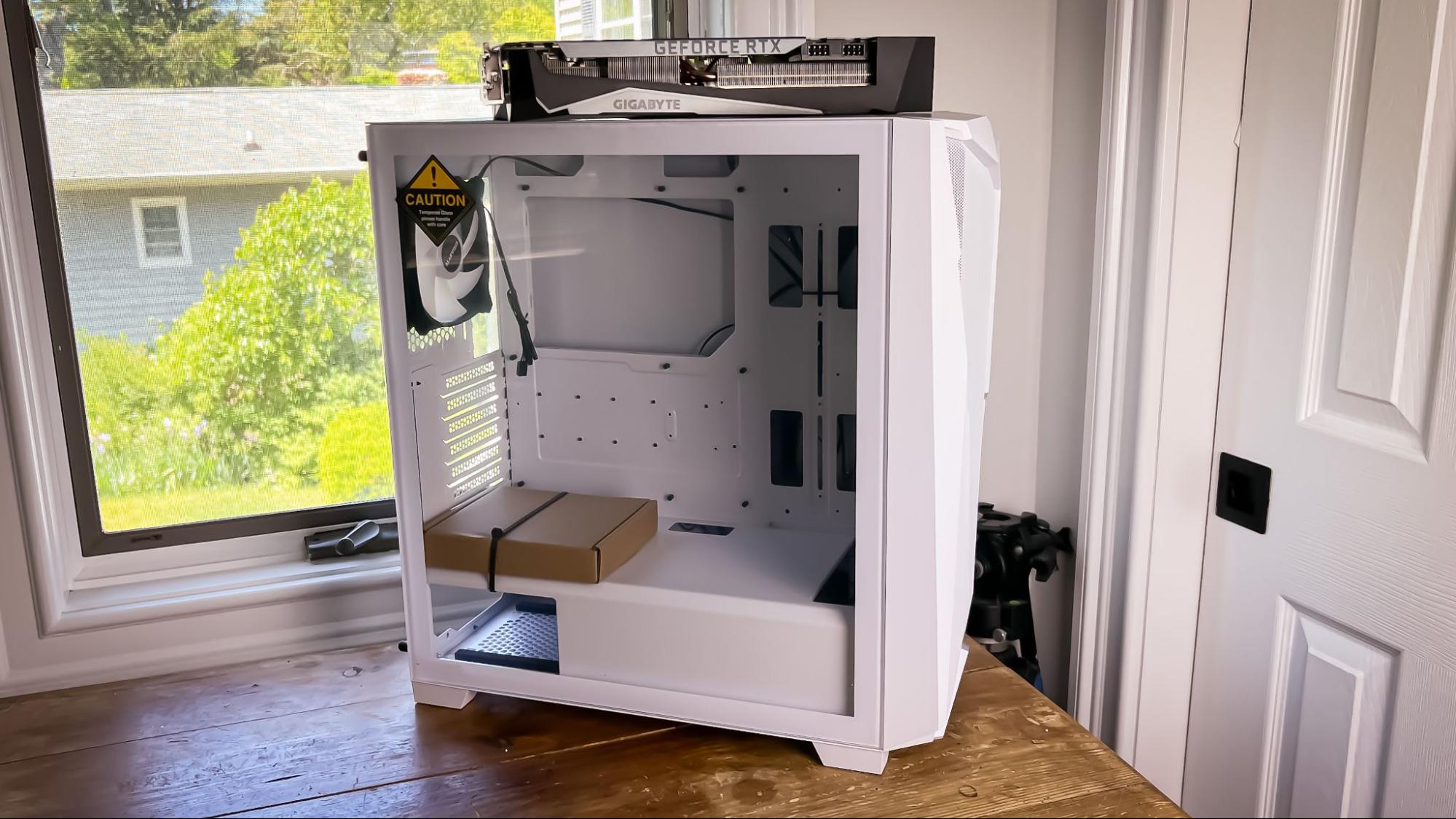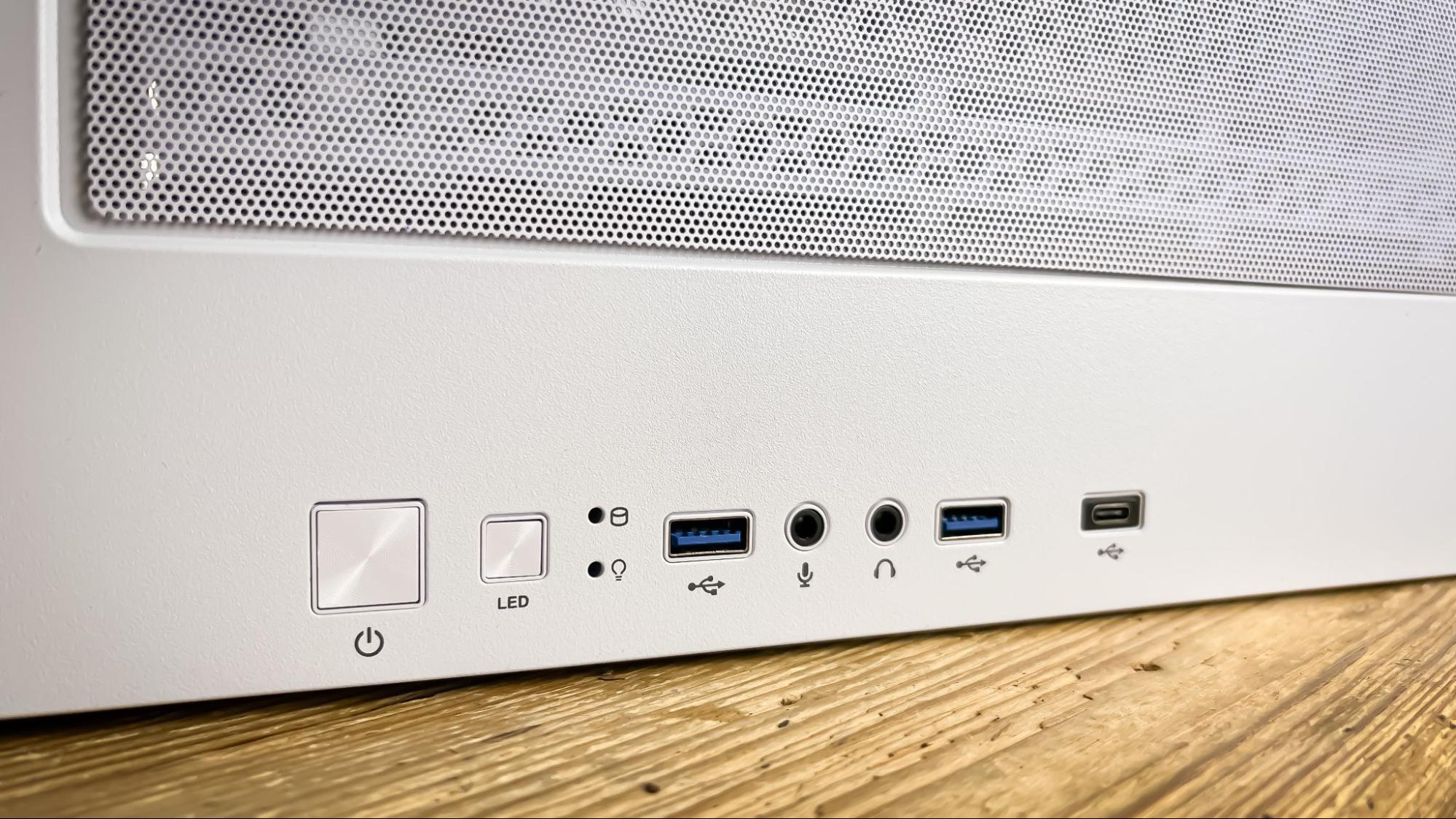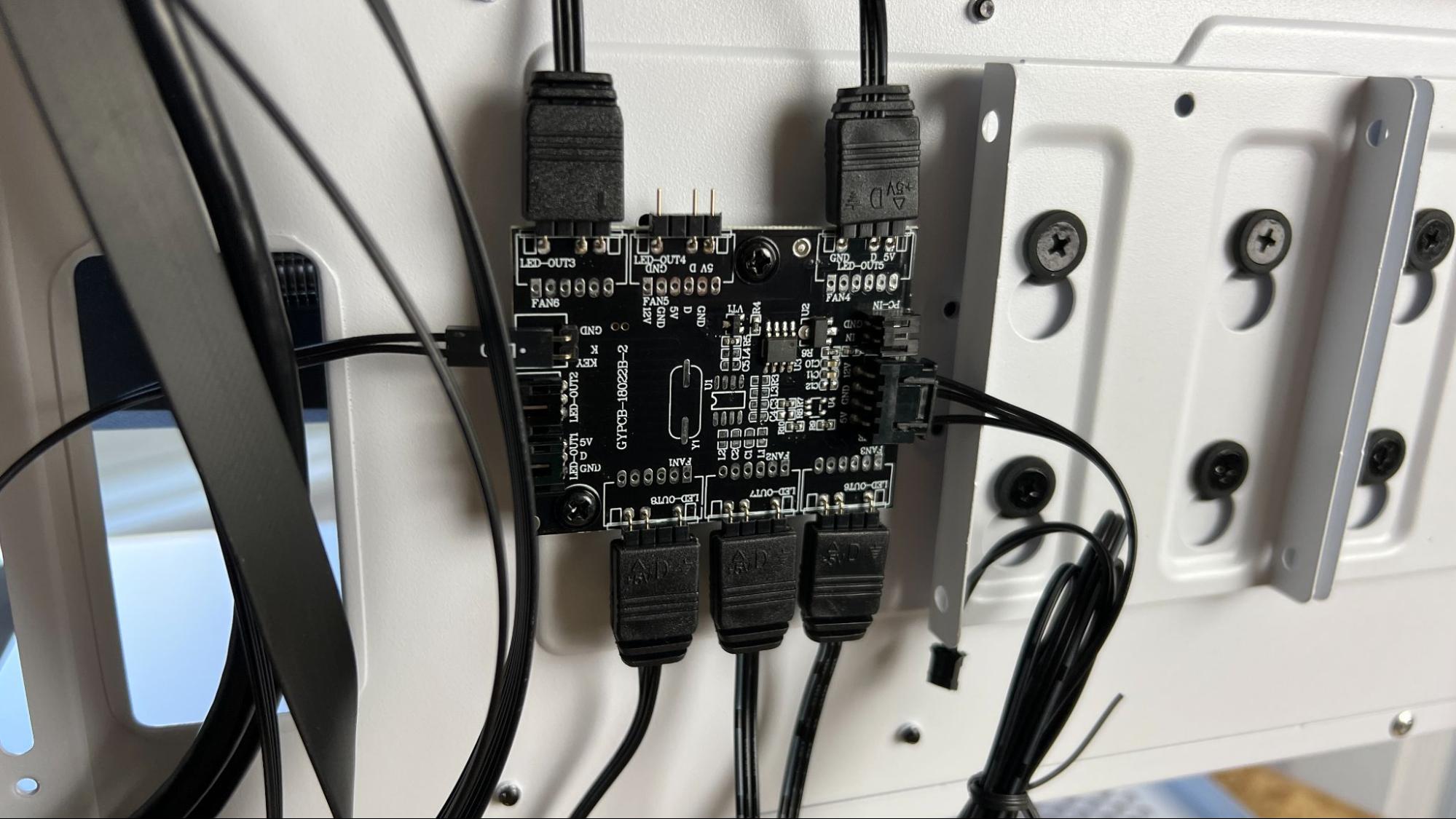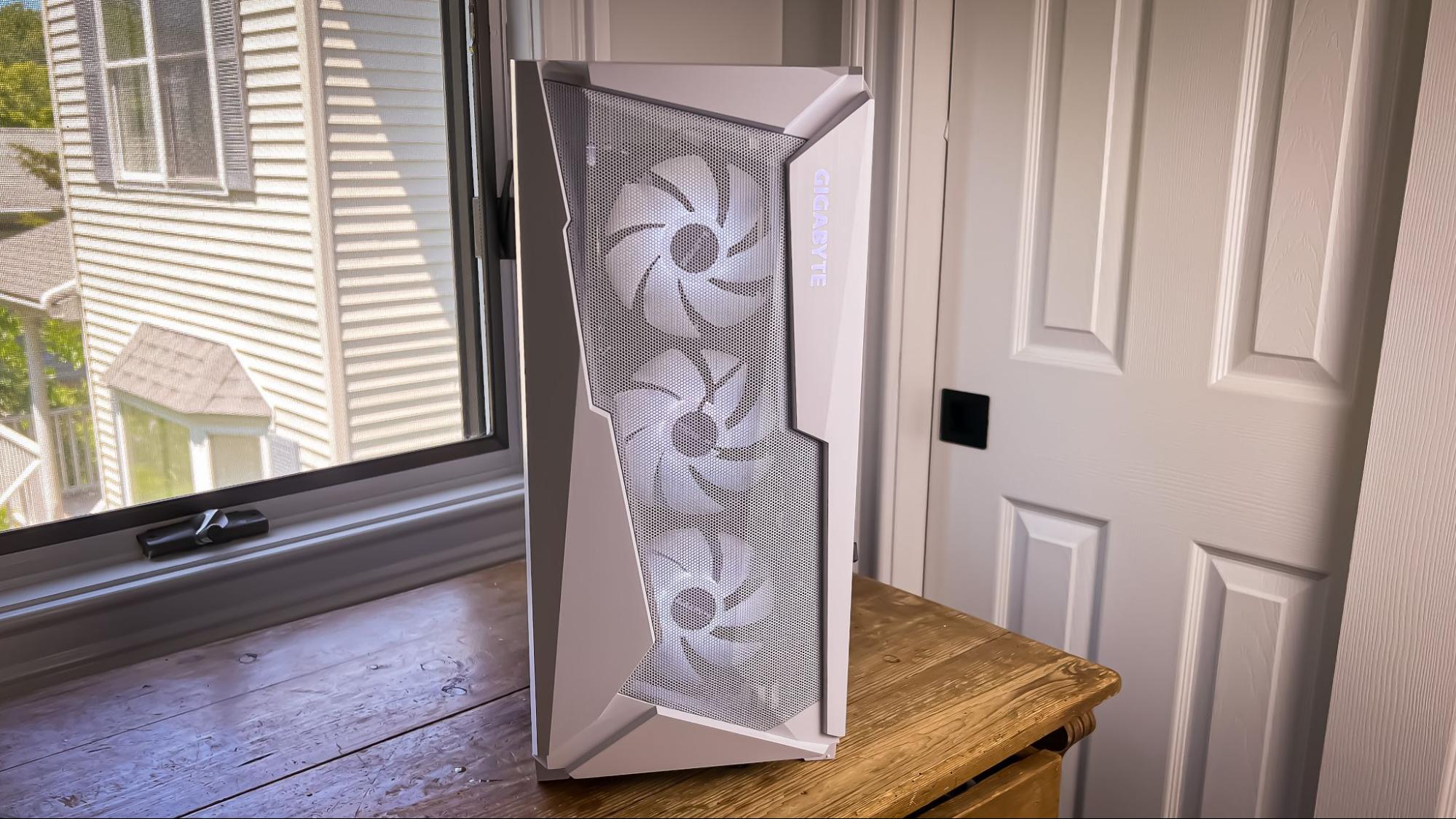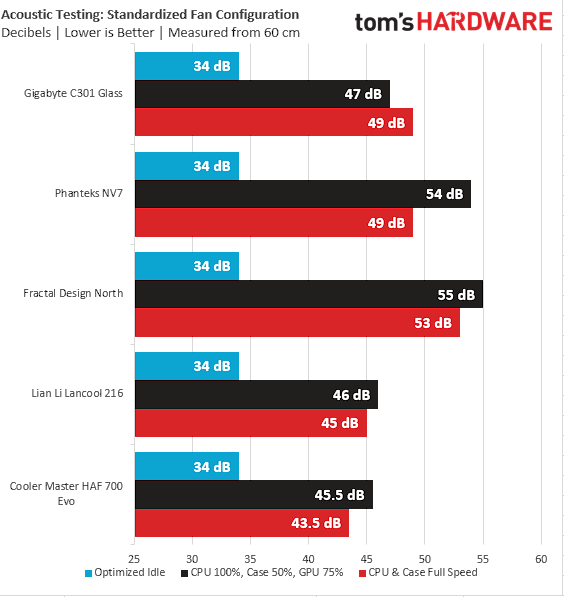Tom's Hardware Verdict
The Gigabyte C301 is a solid case in terms of performance, helped by four included fans. But its design is a bit generic, and the finish and RGB aren’t great for the $100 price.
Pros
- +
Four pre-installed aRGB fans
- +
Great thermals
- +
Vertical GPU bracket included
Cons
- -
Lackluster finish
- -
RGB isn’t the best
- -
Awkward gap next to the motherboard tray
Why you can trust Tom's Hardware
Gigabyte and I go way back – almost six years. I remember helping my friend assemble his PC at the time, which featured an AMD Ryzen 7 1700X and a Gigabyte GA-AX370 Gaming 5 motherboard. At the time, the board was sick. The DIMM slots were RGB and the VRM cooler is an actual heatsink. Eventually, I purchased the Aorus Gaming 7, which featured RGB on the DIMM slots and PCIe.
Here in 2023, we have Gigabyte’s newest case, the C301 Glass. It’s a traditional mid-tower chassis with addressable RGB and an airflow-focused design. While the C301 looks to be a solid competitor, at $100, can it compete with the best PC cases? We’ll have to put it through our usual testing to say for sure. But first, here are the specs, direct from Gigabyte.
Specifications of the Gigabyte C301 Glass
| Type | ATX Mid-Tower |
| Motherboard Support | Mini-ITX, Micro-ATX, ATX, E-ATX |
| Dimensions (HxWxD) | 19 x 8 x 18 inches |
| Max GPU Length | 15.7 inches |
| CPU Cooler Height | 6.69 inches |
| External Bays | X |
| Internal Bays | 2x 2.5 and 2x 3.5-inch 4x 2.5 inch |
| Expansion Slots | 7 |
| Front I/O | 1x USB 3.1 Gen2 Type-C 1x USB 3.0 LED Switch Audio Jack |
| Other | Vertical GPU Bracket |
| Front Fans | 3x 120 or 140mm |
| Rear Fans | 1x 120mm |
| Top Fans | 3x 120 or 2x 140mm |
| Side Fans | X |
| Bottom Fans | X |
| Weight | 17 pounds |
| Warranty | 5 years |
Features of the Gigabyte C301 Glass
Gigabyte is one of the biggest names in the component and PC realm, with products ranging from peripherals to motherboards, monitors, and much more. Heck, the motherboard I’m using in my personal rig to write this review is a Gigabye Z690 Aorus Master. While I love my motherboard, I didn’t immediately love the C301 Glass on sight.
The Gigabyte C301 Glass is an ATX mid-tower that comes in white (like our review unit) or black, and includes four aRGB fans. The number of included fans is nice for this price, but they are 3-pin, so you will need to do some tinkering within the BIOS to balance sound and cooling levels.
And while the C301’s included fans are aRGB, the lighting is sub-par. The illumination from the fans is not uniform. It’s focused in the center, around the logo, and in daylight that’s all that lights up. I also found it weird that the fans did not have an orange default setting. Isn’t orange the company’s color? Maybe I'm just annoyed because orange is my favorite color.
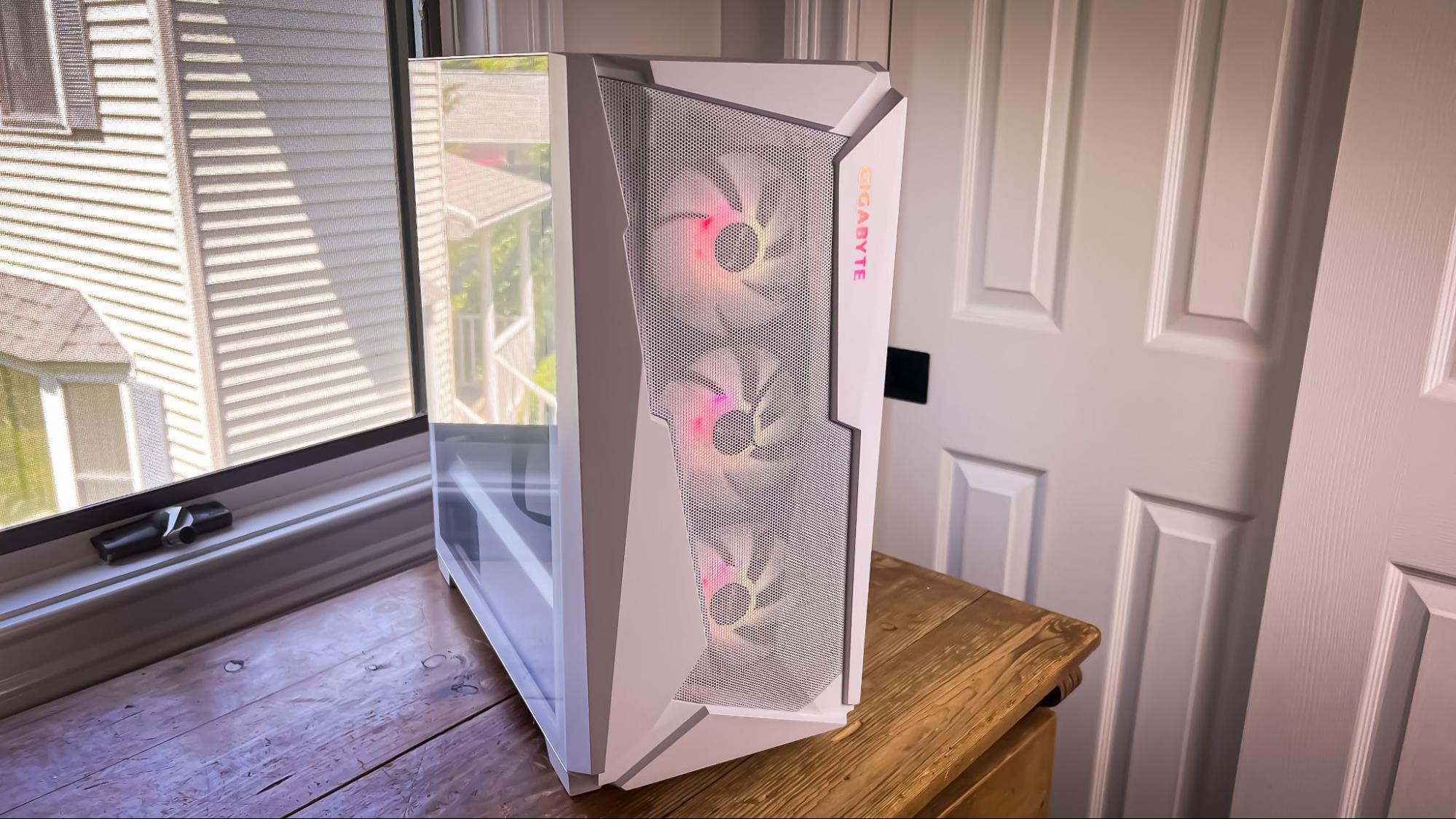
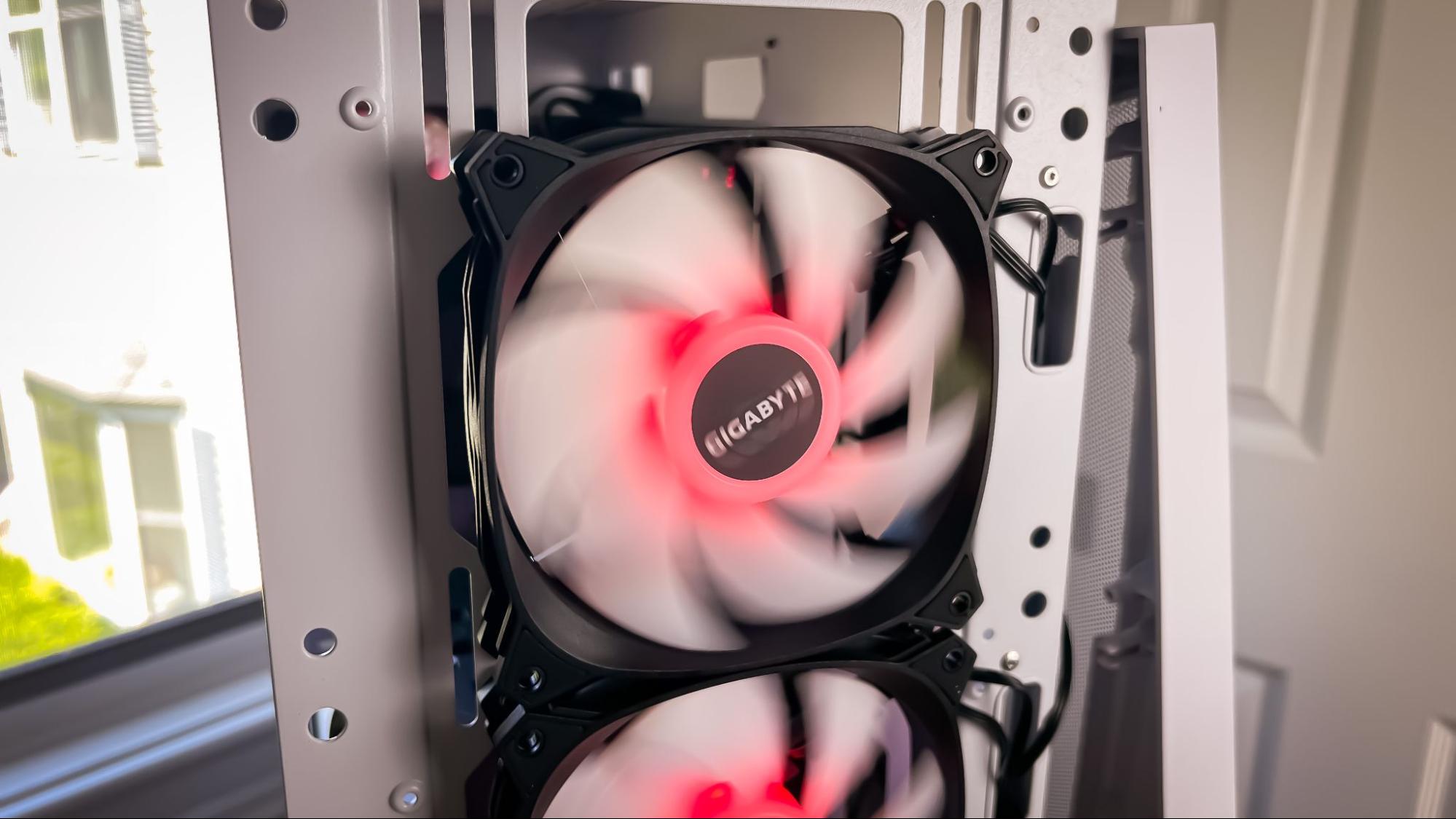
While the included fans may not be the best, there are lots of options for adding your own. The C301 can fit three 120 or three 140mm fans up front; three 120 or two 140mm up top; and a single 120mm fan in the rear for exhaust. For those who plan to install radiators, the front or top of the case can house 360mm rads no greater than 30mm and a 120 in the rear.
The case’s finish is diappointing; after removing the thumb screws from the PCIe bracket lock, some of the paint came away with the screw. This doesn’t bode well for the long-term durability of the paint job – especially if you plan on adding multiple upgrades.
Much of the rest of the case is pretty standard – but not all of it. There’s a typical mesh front panel, but the panel in front of the motherboard tray looks like its missing something. I originally thought it was a space for SSDs, but it’s not. The area just looks skeletal, with random holes and lines punched in it. The case’s product page doesn’t indicate that the area is designed to be used for anything. Odd.
Get Tom's Hardware's best news and in-depth reviews, straight to your inbox.
While a riser cable is not included, Gigabyte does throw in a vertical GPU mounting bracket. So you can mount your graphics card in the bottom of the PSU shroud area if you bring your own GPU cable.
Room for storage devices is respectable: There are two 2.5-inch SSD sleds behind the motherboard tray. And a cage beneath the PSU shroud holds either two 3.5- or 2.5-inch storage devices. I’d recommend you remove the cage if it’s not in use, as it limits the amount of extra cable space.

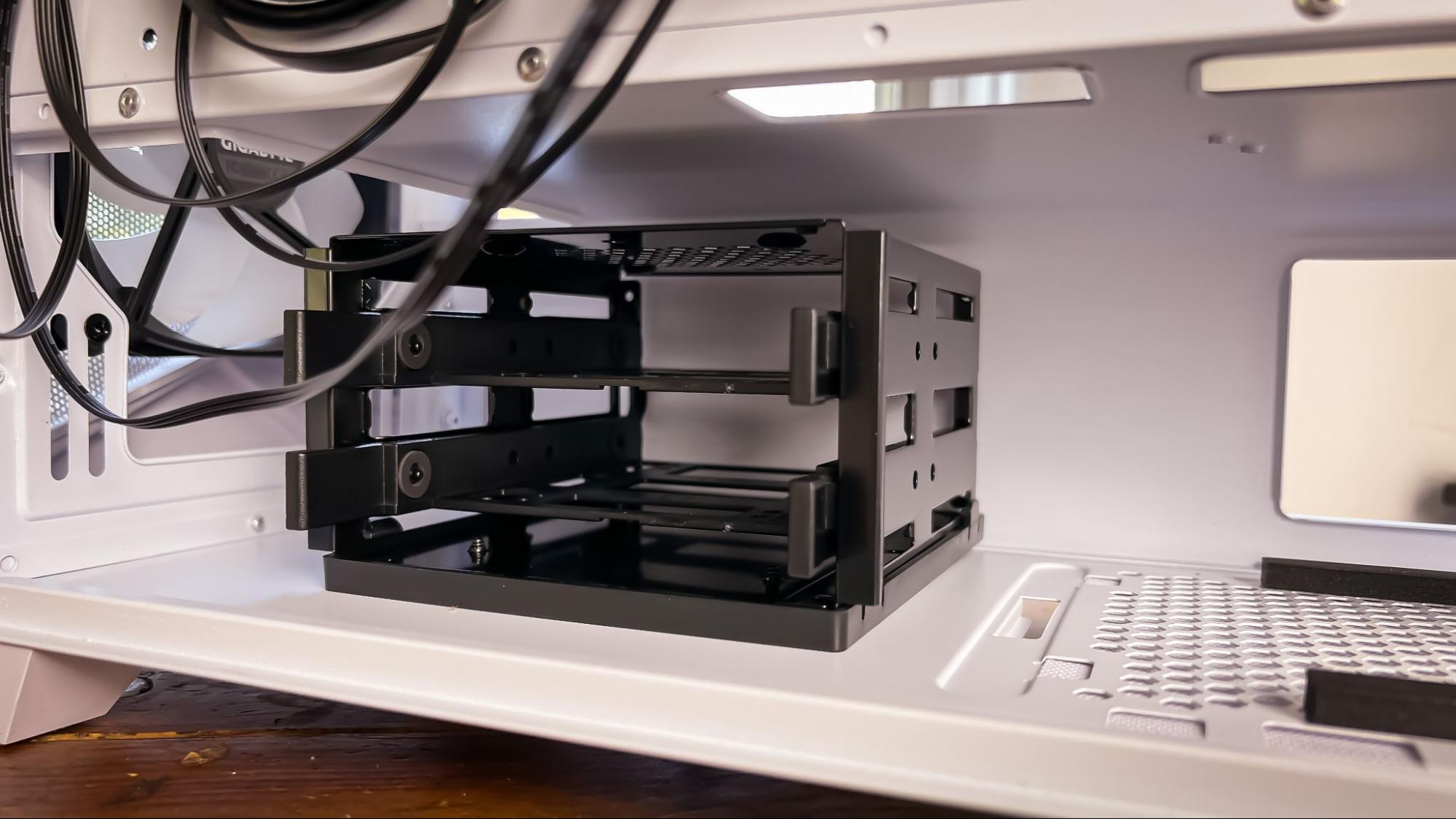
While I appreciate the included RGB controller, one or two fan headers would’ve been nice to see here. However, you’re most likely going to be replacing the fans with brighter ones anyway, so you can use the included splitter.
Internal Layout
The Gigabyte C301 Glass stands at 19 x 8 x 18 inches (HWD), which is about average these days. Like most modern cases that aren’t on the extreme budget and of things, the C301 comes with pre-installed stand-offs for easy motherboard installation.
This case can certainly hold its own on the airflow front, which is evident in our testing results, which we’ll get to shortly.
Usually, I’m not a fan of PSU windows in cases, but Gigabyte does sell the GP-AP1, which features an integrated screen.
Testing Hardware
Our testing hardware is built around Intel’s 12 Gen “Alder Lake” platform, specifically a Core i7-12700KF, which is cooled by a Noctua U12s air cooler. Our graphics card is a Gigabyte RTX 3070 Ti Gaming OC.
Acoustic Results for the Gigabyte C301 Glass
Our acoustic tests consist of three scenarios: We run the CPU at full load, the CPU and GPU at full load, and an optimized mode. The CPU full load test runs the CPU and case fans at their maximum speed. For the CPU and GPU full load acoustic test, we also stress the Gigabyte RTX 3070 Ti Gaming OC and set the fans at 75% speed, because in gaming the fans never run at 100 percent and are far too loud when they do.
For the optimized mode, we run the GPU fan speed at 30% and run the CPU and included case fans at the lowest RPM that they will spin.
Honestly, while this case looks like it belongs to a Gigabyte-dedicated prebuilt, do not sleep on the sound test. It’s not the quietest we’ve tested, but not bad, either.
Thermal Results for the Gigabyte C301 Glass
For the thermal tests, all case and CPU fan speeds are set to 100%. The Core i7-12700K is set at a fixed 4.7GHz clock at 1.3v on all performance cores to ensure consistent power consumption across test scenarios. Letting the GPU run at 75% fan speed enables it to maintain its power target while sticking to one set reasonable fan speed, so that the temperature is the only variable.
Again, just like in the sound test, the C301 Glass is quite the performer. While the GPU thermals are average, CPU thermals are almost identical to the Fractal North, which features a mesh side panel.
Bottom Line
Over the years, Gigabyte has made a big impact in the DIY PC community, which spans across almost every piece of hardware. The C301 Glass is a decent case overall, especially if you like the way it looks. But it needs to be $20 or so cheaper to compete, especially considering the issues we had with paint coming off along with its screws. You can buy the Phanteks Eclipse G360A for the same price and get much better RGB fans, a better finish, and similarly good performance. The Gigabyte case does come with a front/top USB-C port, though, which is something the Phanteks case sadly still lacks.
MORE: Best PC Cases
MORE: Best Mini-ITX Cases

Myles Goldman is a freelance writer for Tom's Hardware US. He reviews keyboards and cases.
